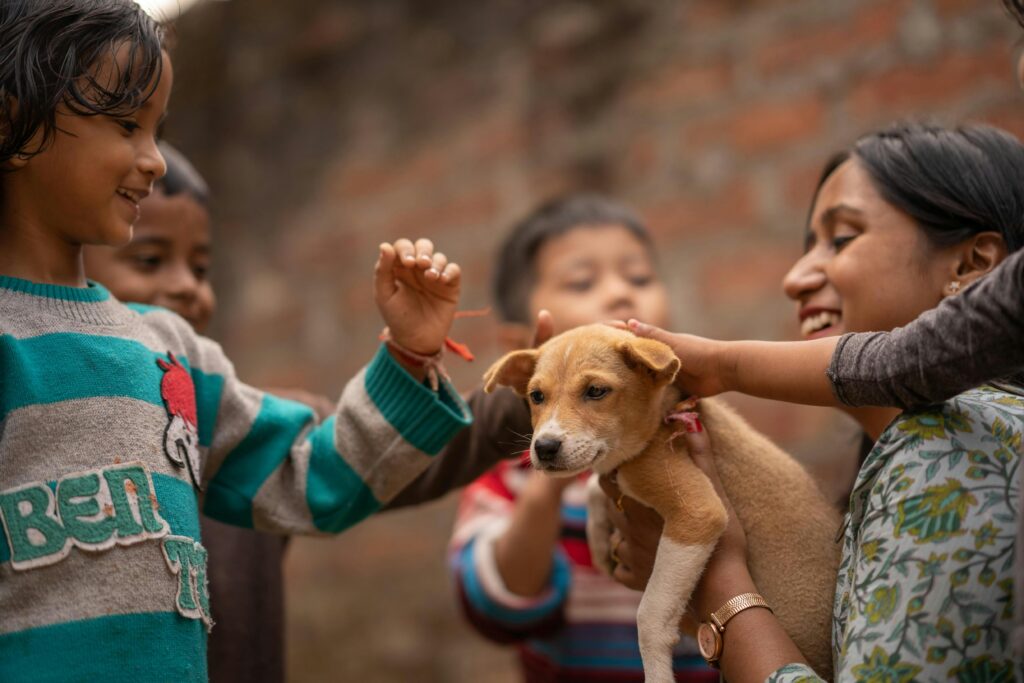
Training your puppy doesn’t always have to mean setting aside dedicated time for commands and drills. With the play and learn approach, you can turn everyday interactions into opportunities for obedience training. By blending play, daily activities, and learning, your puppy will naturally pick up essential skills while strengthening their bond with you.
In this guide, we’ll explore how to incorporate training into your routine, making it fun, seamless, and effective.
Why Play and Learn Works
The play and learn method focuses on using natural moments in your day to reinforce good behavior. Puppies are constantly observing and learning from their environment, making everyday interactions valuable opportunities for training. Here’s why it’s so effective:
- Consistency: Repeated exposure to commands in real-life scenarios helps your puppy understand and retain them.
- Engagement: Integrating play keeps your puppy interested and eager to participate.
- Reduced pressure: Training feels less formal and more like a fun bonding experience.
By adopting the play and learn approach, you can create a positive and rewarding learning environment for your puppy.
Everyday Activities That Double as Training
- Meal Time Manners
Meal times are a perfect opportunity to teach focus and patience.
- Before placing the food bowl down, ask your puppy to sit or wait.
- Reward them with their meal once they comply.
- Gradually increase the wait time to improve their self-control.
This simple activity reinforces obedience and teaches your puppy to associate patience with rewards.
- Walking Lessons
Daily walks are more than exercise—they’re a chance to practice commands like heel, sit, and leave it.
- Use treats to encourage your puppy to walk calmly by your side.
- Stop periodically and ask for a sit before continuing.
- If your puppy pulls or gets distracted, redirect their attention with a command and reward them for compliance.
Walking becomes a dynamic training session that strengthens your puppy’s focus and recall.
- Toy Time Training
Playtime with toys can teach important lessons about sharing and boundaries.
- Use commands like take it when offering a toy and drop it to take it back.
- Encourage your puppy to follow rules during games like fetch or tug-of-war.
- Reward them for listening and following the rules.
This activity combines fun and discipline, making it easier for your puppy to grasp commands in a playful setting.
- Household Chores as Training Opportunities
Simple chores around the house can become training moments.
- Ask your puppy to stay while you sweep or do laundry, rewarding them for remaining in place.
- Use commands like off or leave it if they try to interfere with the task.
By involving your puppy in daily routines, you’re teaching them to respect boundaries and follow commands in a practical context.
- Greet and Treat
Turn greetings into lessons in manners and self-control.
- When guests arrive, ask your puppy to sit before they’re allowed to say hello.
- Reward them with treats or praise for staying calm and following commands.
This exercise teaches your puppy to remain composed in exciting situations, an essential skill for obedience.
Tips for Success with Play and Learn
- Be consistent: Use the same commands and rewards across activities to reinforce learning.
- Keep it short: Puppies have short attention spans, so keep training moments brief and focused.
- Use positive reinforcement: Reward your puppy with treats, toys, or praise to encourage good behavior.
- Stay patient: Progress may be gradual, but persistence pays off.
- Adapt to your puppy’s pace: Tailor the difficulty of activities to suit your puppy’s current skill level.
The Benefits of Play and Learn
Adopting the play and learn method brings numerous advantages for you and your puppy, including:
- A stronger bond as you engage in shared activities.
- Improved obedience as your puppy learns commands in real-world scenarios.
- Reduced stress, as training becomes a natural part of your day.
- A happier, more confident puppy who thrives on positive reinforcement.
Signs Your Puppy is Thriving
You’ll know the play and learn approach is working when you notice:
- Faster responses to commands during daily activities.
- Increased focus and ability to follow directions.
- A more engaged and eager-to-please attitude from your puppy.
Conclusion
Training doesn’t have to be a rigid or separate task. With the play and learn approach, you can seamlessly integrate obedience lessons into your puppy’s daily life. By turning everyday activities into opportunities for growth, you’re setting the foundation for a well-mannered and happy companion.
Start incorporating these strategies today, and watch your puppy thrive as they learn through play, routine, and fun. The journey of raising a focused and obedient puppy becomes not only effective but also deeply enjoyable for both of you. Petsdogpuppy
